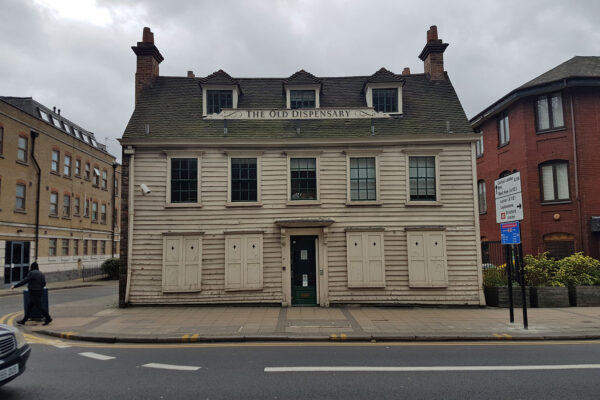Just around the corner from the main shopping area in Stratford is an old building — the Old Dispensary, and it’s the oldest building in the town.
Stratford is a part of London that’s comparatively new, being mostly marshes until the railways arrived in the 1830s, so it’s not hugely surprising that it lacks much in the way of ancient buildings.
Being built around the early 1800s, it’s not massively old, but still the oldest thing around here.
Although called a Dispensary, and an old one at that, it was opened originally as a Hospital — at a time when hospitals tended to be small affairs. The hospital was opened by a local doctor, William Elliot in 1861 using the building which was lent to him – rent-free – by its owner, Mary Curtis.
As Stratford industrialized and the population increased, a plot of land around the corner was donated for a New Dispensary, and this was to be expanded over time to eventually become Queen Mary’s Hospital.
The Old Dispensary became its outpatients’ department.
The Old Dispensary was then over time leased out to other uses, and was for a while the offices of Arthur Webb Ltd., office fitters and building contractors, then more recently the local museum. There was for a while at least, a shop front added onto the building, but that was taken down in around 1949 by Charles Living and Son — who still operate locally as an estate agent.
The hospital though closed in 1983, and the site is now a housing estate, with just the gateway to the old hospital remaining.
The Old Dispensary is now the sole remaining building from that old medical era, and is still owned by the local council, who use it for offices for their council run gyms — so in a way it’s still performing a medical function.
However, the Old Dispensary, never seems to have been an actual dispensary.
In an area that has fast turned into a Tesco Value version of Dubai with modestly tall towers springing up next to a shiny shopping centre, it’s pleasing that at least one small piece of heritage is managing to cling on.













Great to see the image of The Old Dispensary Ian! I would like to add to the story – the tree that is at the back of the building, as shown in a couple of your photos, is a very special one. It’s a white mulberry! Most of the mulberries around are the black variety, but this is the one that best supports the silk moth larvae. The possible background to the existence of this one is about mulberry trees, especially the white variety, having medicinal qualities. Hence they planted one at this building when it was a hospital. Please see my page Mulberry trees in East London: https://www.facebook.com/pg/Weisswritings/posts/?ref=page_internal
Why are the Red House E7 9PN (c. 1760) and the Spotted Dog (much earlier and very close to The Red House, between nos. 14 and 2 on the map) not mentioned?
Because they’re not in Stratford.
Why is this listed building being used as a shop. Surely not, what is happening to our Heritage.
What’s wrong with using it as a shop – surely an old building in use and cared for is better than being left empty to rot?